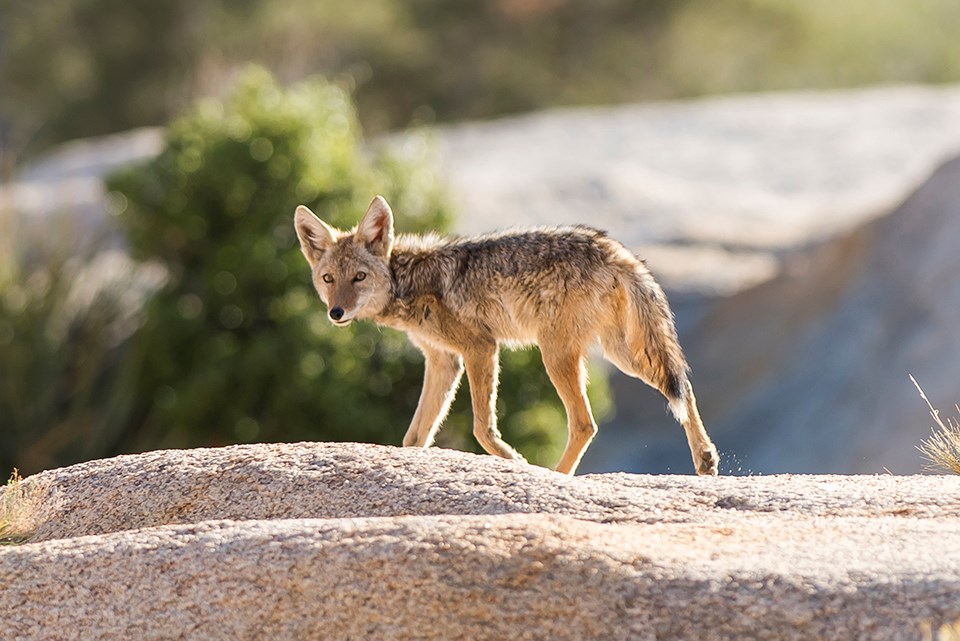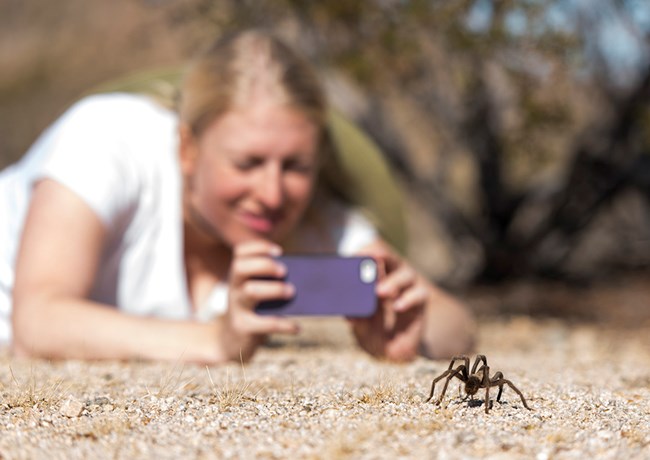
NPS/Brad Sutton For Your Safety and Theirs Joshua Tree National Park is a sanctuary and home for wildlife. Enjoy viewing these incredible creatures, but remember that this is their home and we are the visitors. It is illegal and harmful to people and wildlife to approach, feed, handle, capture, or harass any wild animal in the park. If you treat wildlife with respect by not approaching or feeding them, you are helping them live natural lives. By keeping wildlife wild, you are protecting their safety and yours. Follow Leave No Trace principles to ensure your actions do not have a lasting impact on the park and its wildlife. Find additional information about wildlife viewing at national parks by visiting Smart Wildlife Watching. Do Not Feed WildlifeFeeding wild animals disrupts their lives and is dangerous to people. The saying "a fed animal is a dead animal" is unfortunately very true at Joshua Tree. These animals are well adapted to desert life and do not need human food to survive.

NPS/Brad Sutton Keep Your Distance
Enjoy the rare opportunity to view a wild animal in its natural habitat, but don't get too close! Getting too close to them can stress the animal which then interferes with their natural behavior. A good rule of thumb is that you are too close to an animal if your presence causes them to move.
All wildlife in national parks are protected by federal law and violation of this can result in a fine.
Important Reminders for Viewing Wildlife at Joshua Tree National Park
Report a Wildlife SightingReporting wildlife observations enhances our understanding of animals in Joshua Tree, helps park managers conserve native species and habitats, and protects wildlife and the public. To submit an observation, go to our Report a Wildlife Sighting webpage. |
Last updated: February 13, 2024
